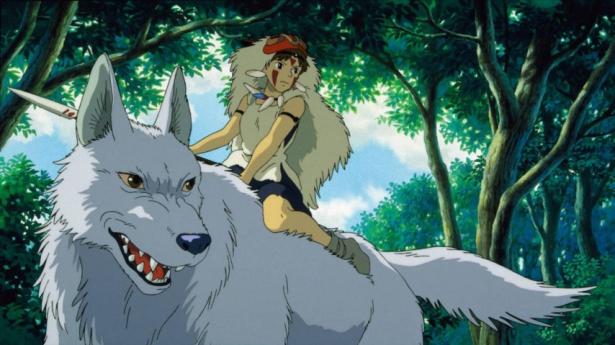Studio Ghibli gave its villains too much credit. So often in its heartfelt anime films, foes are just misunderstood. They’re one deeply felt conversation away from reckoning with their own misguided actions, beaten with kindness rather than force. In the real world, the enemies of art and nature don’t have complex backstories or noble intentions that got out of hand. The bad guys steal and burn on a whim, driven only by entitlement. This week, irony layers upon irony as the thieving tech bros behind OpenAI have released a ChatGPT update particularly good at mimicking the style of Studio Ghibli, just as the anime house’s cautionary epic about technological overreach returns to theaters.
In celebration of the studio’s 40th anniversary, a new 4K restoration of Princess Mononoke screens in IMAX theaters across the country, all while unscrupulous nerds steal from the masters who created it—and burn up an extreme amount of resources to do so. At least the environmentalist fantasy imagined a foe whose destructive industrialization was driven by need. Lady Eboshi, the antagonist of Princess Mononoke, ravages the forest and disrupts the natural order of things, but only because her desire to protect and nurture her community of societal rejects is so strong. But those like OpenAI founder Sam Altman, who changed his social media avatar to an AI version aping Ghibli’s house style, spit in the face of Hayao Miyazaki, the man whose style they love, just because they can. Terrible copies flood social media, made by a machine completely antithetical to the creations it strives to replicate.
It’s hard to imagine a divide with more clarity; in NHK Special: Hayao Miyazaki—The One Who Never Ends, Miyazaki says, in a quote that has nearly gone as viral as the AI images plagiarizing him, that “I would never wish to incorporate into my work at all. I strongly feel that this is an insult to life itself.”
Adding injury to that insult is the broad infringement of copyrights that this generative AI must partake in to achieve this result. OpenAI is being sued left and right, by individual artists and publications alike, all to “give users as much creative freedom as possible,” according to a statement provided to 404 Media. And yet, the crass and lifeless copying of a house style is about as creatively limiting as anything imaginable. At least those How To Draw Anime Characters books, where one learns by reproducing established styles and characters, encourage artists to build the skills necessary to actually make something of their own. Only offering up bad forgeries, generative AI becomes the refuge of the selfish, the lazy, the imaginatively empty.
Because Lady Eboshi is driven by passion and protectiveness, wrongheaded as it may be, in Princess Mononoke, she is capable of change. She is not killed or even soundly defeated by the film’s heroes. Instead, she is confronted by the consequences of her extremism, and learns to embrace balance. Even in Ghibli films less on-the-nose to this situation, like Nausicaä Of The Valley Of The Wind, humanity gets the benefit of the doubt because there’s something relatable to the fear driving their actions. After destroying the world with apocalyptic weaponry, what remains of mankind eventually listens to reason instead of dooming themselves again through violent ignorance. In Miyazaki’s eco-fables, a kernel of hope exists even when considering those who have killed their own planet, because they had emotional reasons for their actions. Understanding those emotions allows Ghibli’s heroes to meet the villains on their level, to let faith grow from the shared anxieties that underlie their humanity.
But this mindset requires antagonists driven by emotion, rather than the lack of emotion. Princess Mononoke explores the destruction of nature by humanity and its machines through the lens of need. ChatGPT and its flood of Ghibli-flavored slop appeal only to half-hearted wants. In both cases, there’s greed and exploitation. But only in one is there the possibility to learn from mistakes.
In the documentary The One Who Never Ends, Miyazaki continues his thoughts on AI art with statements nearly as apocalyptic as those in Nausicaä. “I feel like we are nearing to the end of the times,” he says. “We humans are losing faith in ourselves.” No longer seeing art as work, as something worth putting effort into, a vast audience now has no faith that it can create anything of its own. Instead, this audience is more than happy to shove the movies it loves—movies currently returning to the big screen as animation’s gold standard—into the meat grinder, for no other reason than because it’s easy to do so. If the villains in Ghibli movies were that vacant, the films would never have become classics in the first place.


Spread the word